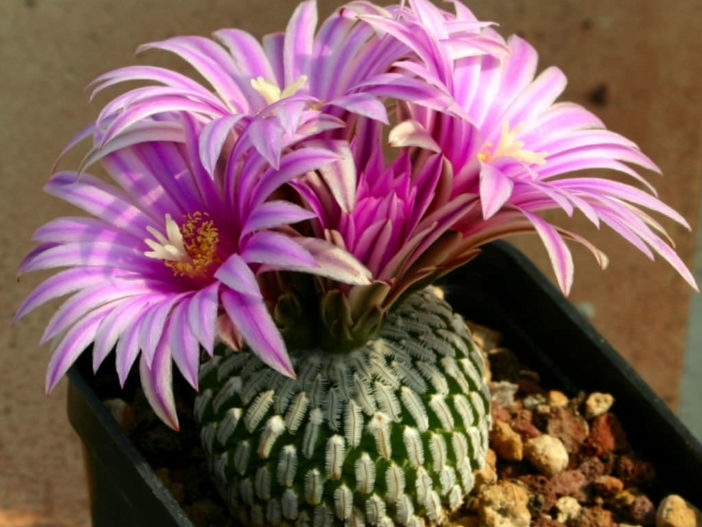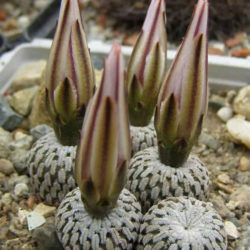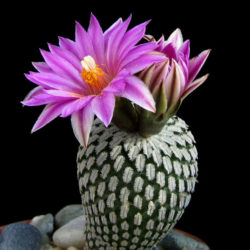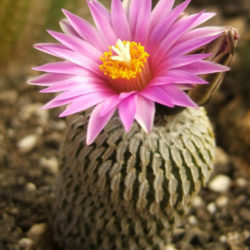Scientific Name
Turbinicarpus pseudopectinatus (Backeb.) Glass & R.A. Foster
Synonym(s)
Mammillaria pseudopectinata, Neolloydia pseudopectinata, Normanbokea pseudopectinata, Pediocactus pseudopectinatus, Pelecyphora pseudopectinata, Thelocactus pseudopectinatus
Scientific Classification
Family: Cactaceae
Subfamily: Cactoideae
Tribe: Cacteae
Genus: Turbinicarpus
Description
Turbinicarpus pseudopectinatus is a dwarf cactus with a globular, usually solitary stem with hatchet-shaped tubercles arranged in spiral rows and tipped with linear areoles that bear tiny white spines. The stem can grow up to 1.2 inches (3 cm) tall and 1.6 inches (4 cm) in diameter. Each areole bears about 50 radial spines spread horizontally in a comb-like arrangement.
The stem produces one to five flowers at the apex in early spring. The flowers are white to bright pink with darker magenta or reddish-brown mid-veins. Fruit are tannish-green with tiny black seeds.
Origin
Turbinicarpus pseudopectinatus is native to norteastern Mexico. It occurs in temperate forests and hot deserts in Coahuila, Nuevo León, Tamaulipas, and San Luis Potosí.

Hardiness
USDA hardiness zone 9b to 11b: from 25 °F (−3.9 °C) to 50 °F (+10 °C).
How to Grow and Care
Turbinicarpus prefer to be in full sun in a well-ventilated position to maintain a good body color and spinal development.
When it comes to watering, the golden rule is "never water when the compost is still damp." This is the one error that will certainly kill any plant! Watering should commence in the spring, depending on the weather conditions. The plants should initially be given a light spray to encourage them to grow.
These cacti can withstand high summer temperatures and benefit from providing good ventilation. Do not be tempted to overcrowd the plants. They will be far happier with a bit of space to allow the air to circulate. Winter temperatures can be set as low as 44-46 °F (7-8 °C), providing the plants are kept dry and the humidity levels are also kept low by good ventilation on bright days.
See more at How to Grow and Care for Turbinicarpus.
Links
- Back to genus Turbinicarpus
- Succupedia: Browse succulents by Scientific Name, Common Name, Genus, Family, USDA Hardiness Zone, Origin, or cacti by Genus
Photo Gallery
Click on a photo to see a larger version.


